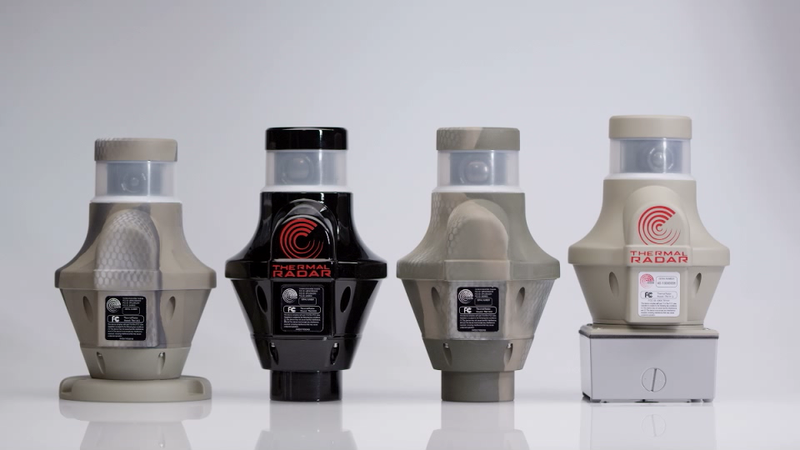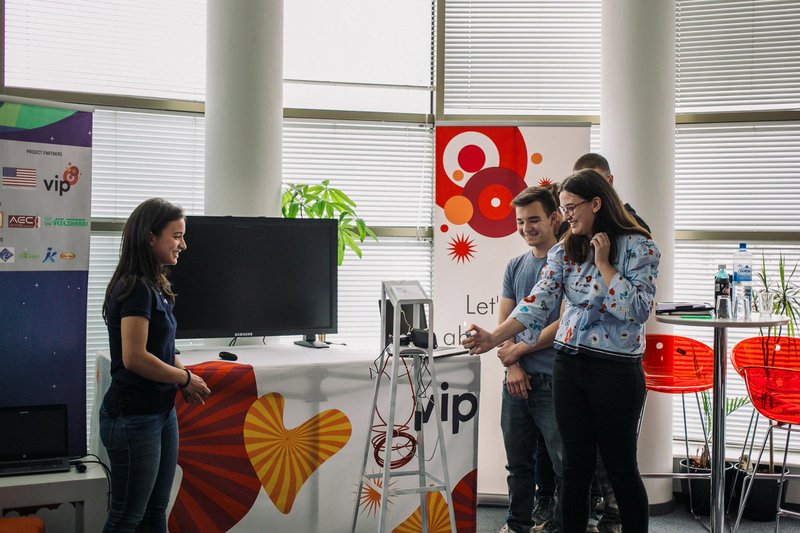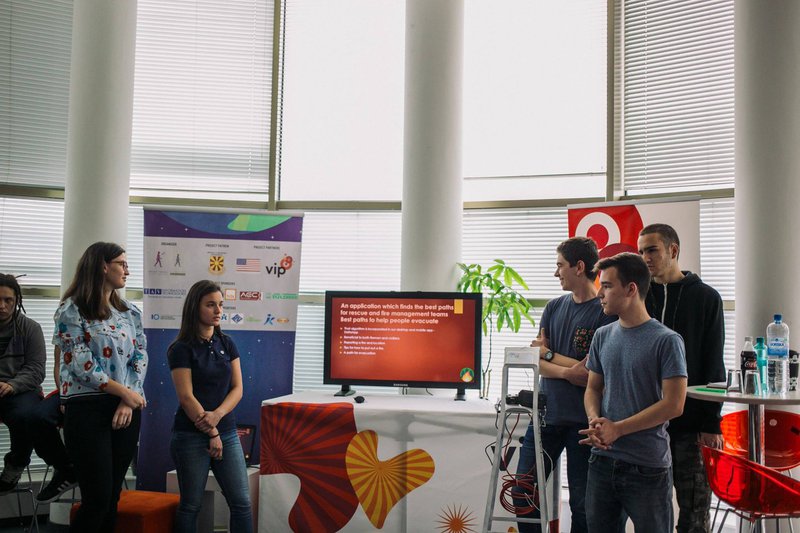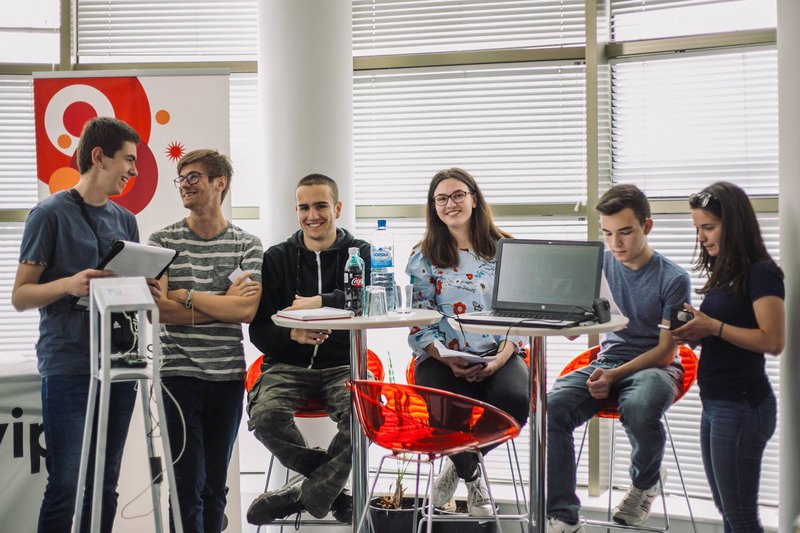Delta | And YOU can Help Fight Fires!
Team Updates
For connecting the camera to our servers, we currently use a Raspberry Pi 2, which would be replaced in the future, but with our budget and possibilities we came up with this idea. The Raspberry Pi uses a distribution of Linux OS, which has a plug-in installed on it called "USB-IP". What it does is it connects the USB Thermal Camera (which we had in our prototype) to an IP address, meaning that the camera is connected in our network. Having all the cameras tethered this way, the signal and data from them are easily transferred back to our servers as if the cameras are directly connected to them. With this solution, instead of having a computer that processes the thermal data on each pole, we have cheap Raspberry Pis that help send the data through our network where one powerful server can process the information for a giant area. It takes up barely any space and energy and it's the ideal solution for our project.
Solar panel technical details:
Dimensions:1x2m hight (3 1/3ft by 6 2/3ft) Power: 300W Charger: 40A Batery: Voltage 12V, Amper hours 100Ah Protection: IP64 Estimated value 310$
Anemometers technical details:
Type: Model 101-D Etesian technologies Outer housing: 100% poly-carbonate Power source: generator magnets, moved by the wind Maximum capacity: 5.5mph, after which can charge the battery Cost: 700$ 30% discount above 100pcs (5 - 24 pcs: 14%, 25 – 99pcs: 24%)
Technical Specifications of the thermal radar (thermal 360° camera)
Thermal Module
Type FLIR Tau 2 sun-safe amorphous silicon microbolometer
FPA Resolution 336x256 or 640x512
Image Bit Depth 8-bit w/AGC or 12-bit raw
Lens Focal Length 9mm, 13mm, 19mm or 25mm
Speed and Resolution
Rotation Speed 30-60 RPM - Configurable
Image Resolution Configurable from .77 MP to 4.7 MP
Power Requirements
Input Voltage 18V-57 VDC
Input Connection IEEE 802.3at PoE+ compliant
Power Consumption 5-7 Watts (Accessory Dependent)
Processor and Analytics
Processor 1GHz ARM Cortex A8 plus C64X+ DSP (TI OMAP DM3730)
Memory 512 MB DDR, 512 MB NAND Flash
Image Storage Memory 8 GB extended Temperature Range μSD Card - Removable
Embedded Analytics Intrusion, Classification, Tracking, High Temperature
Detection Range
Man: 400 m
Vehicle: 1,500 m
Fire: 5 Km
Communication
Network Protocols Zero Configuration System with Multicast DNS/DNS-SD Service Discovery, Supports DHCP, TCP/IP, UDP/IP
Ethernet 10/100BaseT with PoE+ Powering
Protection Standard IP66
Physical
Dimensions 5.75” (W) X 7.75 “ (H) (146mm X 197mm)
Weight 4 lbs. (1.8 Kg)
Portable Platform
Battery Supply 200 AH 24 VDC w/low Voltage Disconnect
Solar 30-55 Watt 24 VDC Panel with Charge Controller/PoE+ Inserter


CONSTRUCTION OF THE POLES:
The poles would be 15 meters in length and they would have a pyramid structure simmilar to our model which you can see on the photo below.
This mechanism would be set up on the highest accessible points in the country. As you can see from our functional dekstop application we have already mapped the highest points on which the poles will be set in our country.
The pole will be made of stainless steel with a melting point of 1400-1450 °C
https://drive.google.com/open?id=0B6OaYFEY1Sg_dVM3...
This is our final presentation with most of the photos we have and a video simulation of the mobile app
We built a prototype of our model that’s about 1/10 the size of the real one. We didn’t manage to get all the parts like an anemometer or a 360 thermal camera since they were too expensive even to rent. We did manage to get a normal thermal camera and most importantly we linked our pole with our app. On our presentation we tested it out, and it correctly showed where we light the fire. It was a small flame with a normal thermal camera, imagine the efficiency of our app on the real deal, high tech 360 camera.

Since we got into the finals, we continued to work on ourproject tirelessly. It was a kind of experience that deepened our bonds andbrought us closer together. The six of us knew each other from before since wedo study in the same class but this was different. When you’re working withsomeone on a goal that’s making the world a better place. It’s a feeling thatyou’re part of something bigger and it’s very empowering. So much so, that it’sclearly seen in our work and it has created strong bonds that will not give upon our idea and endure with our passion in making the world a better place.

The NASA Space Apps Challenge was a life-changing experience.We walked in the hackathon with an idea and ambition. We didn’t expect to getto the local finals because of the edgy competition, and we were meer highschoolers. On the other hand we knewthat our idea was sound and that it stood out from the rest because it isauthentic and well thought out. Any doubts we might have had were blinded bythe fire inside of us that grew only stronger. A passion was born inside us andwe realized something. We have a world to save.

During these last two weeks we’ve learned a lot and among other things we figured that we’d need better weather management. The first thing we figured is that apart from the pole not being grounded, the pole itself will act as a faraday cage. Moreover, we will protect the more sensitive equipment in an IP64 such as the battery, AC DC converter, {raspberry pi} and other devices that can be easily damaged.
The challenges we face:
Protecting our sensors from thunderstorms, rain and the hightemperatures which might damage the camera.
Thunderstorms. If lightning hits the poles the camera batteryand router will be protected by a Faraday cage which will not let electicityharm the mechanism. The solar panel can not be harmed by a direct hit fromlightning.
Rain.Regarding dust and rain the cameras’ are IP67 certified,meaning that they are waterproof.
Very high temperatures. Our cameras will be set up on very highaltitudes (peaks, highest points in the area) where the vegetation is scares sothe fire will not spread near them, but they would still be able to detect it.
The camera might be damaged from lightning which has strucknearby. To solve this problem we will install polarized filters so the sensorwill not sustain damage.
Our mechanism will consist of:
-solar panel of 300 W because we took into consideration the worst casescenario, which is low level of sunlight in winter .
-voltage converter
-batery of 12V and 100 ah and a box to protect it with IP64 configuration
- anemometer/wind sensors model 101-D it has a self charging batery, made ofpolycarbonate
-router 14.6 km radius
Our project would reduce the expenses greatly. We have gathered information regarding the material losses caused by fires from these past 10 years. And we have also calculated the average loss caused by fires per year.
When comparing the amount of money spent on reparations to the price of our product, which is 1, 208, 680 euros (1,342,347 dollars) for our entire country, meaning that for the entire country only 110 camerasa would be needed. It is easy to see just how much money is saved! And these numbers are only for Macedonia, Imagine this implemented around the whole world.
Currently working on a model of our sensors, and a protoype of our application.
Wildfires cause massive material and habitat loss as well as deforestation that leads to climate change. Furthermore countless human lives are affected by wildfires.
To solve this problem we must assess where the fire is spreading from. How do we achieve this?
| https://github.com/DeltaKorchagin/aplikacija.git |
| https://github.com/DeltaKorchagin/aplikacija.git |
SpaceApps is a NASA incubator innovation program.